Recent Storm Damage Posts
Easy Steps to Create Your Family Emergency Communication Plan
1/15/2024 (Permalink)
In regions like New York where the weather can be unpredictable, residents are well aware of the issues inclement weather conditions can cause, such as icy roads during snowstorms or the damage left behind by powerful thunderstorms. At SERVPRO of New Hyde Park/Mineola, we firmly advocate that preparation is key to facing these events safely and ensuring the well-being of your family. Here are a few easy steps to formulate a functional and effective plan:
Step 1: Collect Contact Information
Kick-start your plan by gathering and documenting the contact details of all family members. This includes landlines, cell phones, emails, and work contact details. It can also be beneficial to include the contact information for out-of-town relatives and local emergency services.
Step 2: Choose Emergency Meeting Locations
Identify a couple of accessible meeting places where your family can regroup after a storm in case of a power outage or if cell networks are down. Suitable choices might be local landmarks, schools, or community centers.
Step 3: Identify Safe Shelter Locations
In some instances, evacuating may not be safe or viable. Thus, decide on areas within your house where you could safely shelter during a storm, for example, small interior rooms that are devoid of windows.
Step 4: Account for Unique Family Needs
Take into account any specific needs of your family members while preparing your plan. Consider elements like essential medication, supplies for infants, and the needs of pets.
Step 5: Regular Drills
Make a point to practice your plan regularly with all family members to ensure everyone knows what to do during a storm.
When the storm subsides, remember that SERVPRO of New Hyde Park/Mineola - your local storm damage repair professionals are just a call away to provide prompt service. Our objective is to help get your life back to normal as quickly and seamlessly as possible. Each member of our professional team brings a wealth of experience and expertise to ensure every job, regardless of its size, is conducted to make your home feel “Like it never even happened.”
While storms cannot be prevented, having a Family Emergency Communication Plan ensures that you are swift and ready to weather any storm that comes your way efficiently and effectively.
The Challenges of Urban Storm Preparedness in the Northeast
9/12/2023 (Permalink)
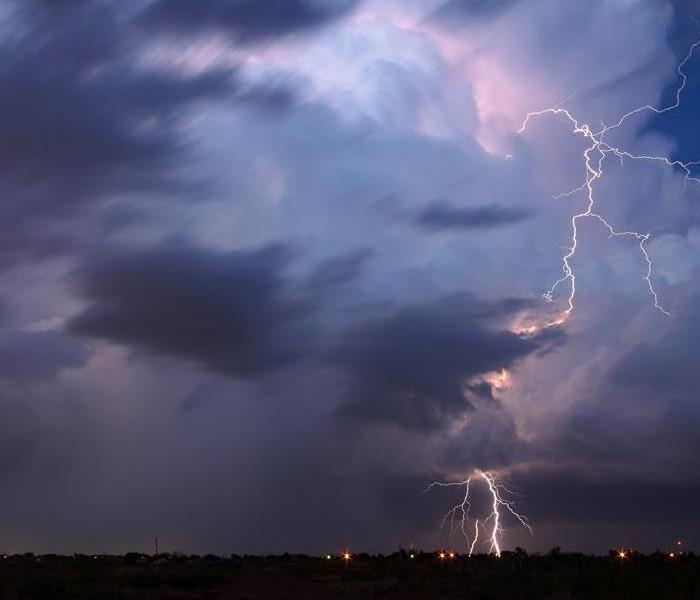 Be prepared incase of a severe storm in New Hyde Park.
Be prepared incase of a severe storm in New Hyde Park.
When it comes to storm preparedness, urban areas in the Northeast face their own set of unique challenges. The combination of dense population, concrete surfaces, and limited green spaces poses specific obstacles for residents and city officials. In this blog post, we will explore the unique challenges of urban storm preparedness in Northeast cities and offer strategies to help residents stay safe during severe weather events.
Limited Green Spaces
One of the biggest challenges of urban storm preparedness in Northeast cities is the limited availability of green spaces. With concrete dominating the landscape, there is a scarcity of trees and other vegetation that can absorb excess rainwater and reduce the risk of flooding. This lack of natural drainage increases the likelihood of urban flooding, making it crucial for residents to be aware of potential risks in their neighborhoods and have a plan in place to seek higher ground or evacuation if necessary.
Overburdened Stormwater Systems
Urban areas in the Northeast often rely on stormwater systems to manage heavy rainfall. However, these systems may already be overburdened due to their age and inability to handle the increased volume of water associated with severe storms. Combined with limited green spaces, this can lead to quicker and more severe flooding. Residents should be aware of areas prone to flooding and avoid them during storms. Additionally, city officials need to invest in upgrading stormwater systems to ensure they can effectively handle heavy rainfall.
Transportation and Evacuation Challenges
Transportation and evacuation can pose significant challenges in densely populated areas during severe weather events. Urban congestion, limited evacuation routes, and compromised public transportation systems can make it difficult for residents to find safe shelter or escape to safer areas. It is crucial for residents to have a clear evacuation plan in place, including knowing the locations of designated shelters and alternative routes. City officials should prioritize developing and communicating effective evacuation strategies tailored to the unique needs of their urban population.
Power Outages and Utility Failures
Urban areas heavily rely on consistent and robust power and utility services. However, severe storms can result in power outages and failures in critical infrastructure. The lack of power and other utilities can have significant consequences, such as disruptions to communication, transportation, and access to essentials like clean water and medical services. Residents should have emergency kits that include backup power sources, flashlights, and a supply of non-perishable food and water. Cities must invest in resilient infrastructure and have contingency plans to quickly restore power and utilities after storm events.
Communication and Education
Effective communication and education play a vital role in urban storm preparedness. However, reaching a large and diverse population in urban areas can be a challenge. Local authorities should invest in comprehensive and accessible communication strategies that utilize multiple channels, including social media, emergency alert systems, and multilingual outreach. Providing residents with information on storm preparedness and clear instructions during severe weather events can help save lives and prevent injury.
Urban storm preparedness in Northeast cities comes with its own set of challenges. By raising awareness among residents, investing in resilient infrastructure, and improving communication strategies, cities can better prepare for and mitigate the impact of severe weather events. Together, we can make our urban areas safer and more resilient in the face of storms.
Understanding Severe Weather: Definitions and Impacts
6/10/2023 (Permalink)
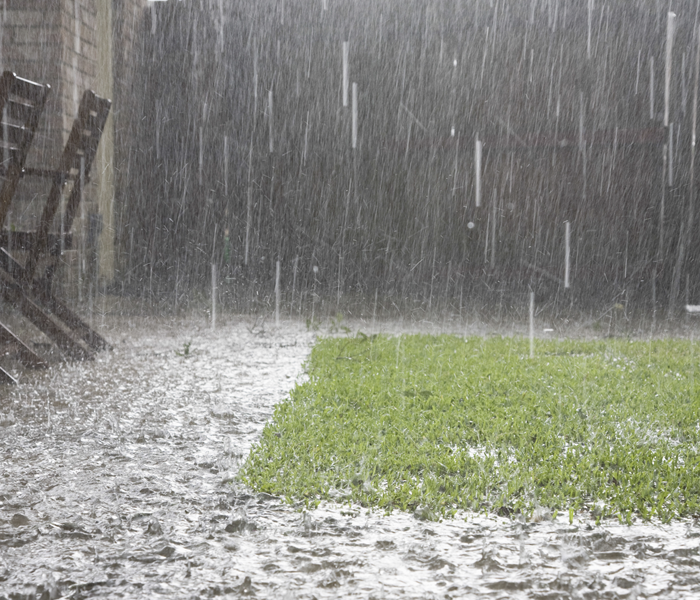 Severe weather can be devastating, be weather aware!
Severe weather can be devastating, be weather aware!
Severe weather is a term that encompasses a range of meteorological events that can cause significant damage to homes and businesses. Understanding the different types of severe weather and their definitions can help individuals prepare and respond appropriately when these events occur.
Tornadoes
A tornado is a violent, rotating column of air that extends from a thunderstorm to the ground. Tornadoes are characterized by their funnel shape and high winds, which can reach speeds of up to 300 miles per hour. They are most common in the central United States and can cause significant damage to buildings, vehicles, and other structures.
Hurricanes
A hurricane is a large, rotating storm that forms over warm ocean waters. Hurricanes are characterized by their strong winds, heavy rainfall, and storm surge, which can cause coastal flooding. Hurricanes are classified based on their wind speed, with Category 5 hurricanes being the most severe. They can cause widespread damage to homes, businesses, and infrastructure.
Thunderstorms
A thunderstorm is a weather phenomenon characterized by lightning, thunder, and precipitation. Thunderstorms can produce high winds, hail, and tornadoes, and can cause damage to buildings and vehicles. They are most common in the summer months and are often accompanied by heavy rain and flash flooding.
Floods
A flood is a natural disaster caused by an overflow of water onto land that is normally dry. Floods can occur as a result of heavy rainfall, snowmelt, or coastal storms. They can cause significant damage to homes and businesses, as well as infrastructure such as roads and bridges.
Blizzards
A blizzard is a severe winter storm characterized by strong winds, heavy snowfall, and low visibility. Blizzards can cause power outages, road closures, and damage to buildings and other structures. They can also be life-threatening, particularly for those who are exposed to the elements for an extended period of time.
Key Takeaways for Severe Weather Preparedness and Restoration Services
In conclusion, understanding the different types of severe weather and their definitions is essential for individuals to prepare and respond appropriately when these events occur. It is important to stay informed about severe weather forecasts and to have an emergency plan in place to protect yourself, your family, and your property. In the event of severe weather damage to your home or business, it is best to seek the services of a professional restoration company to ensure that the damage is properly assessed and repaired.
5 Steps to Take When Preparing Your Home from Flooding
12/13/2022 (Permalink)
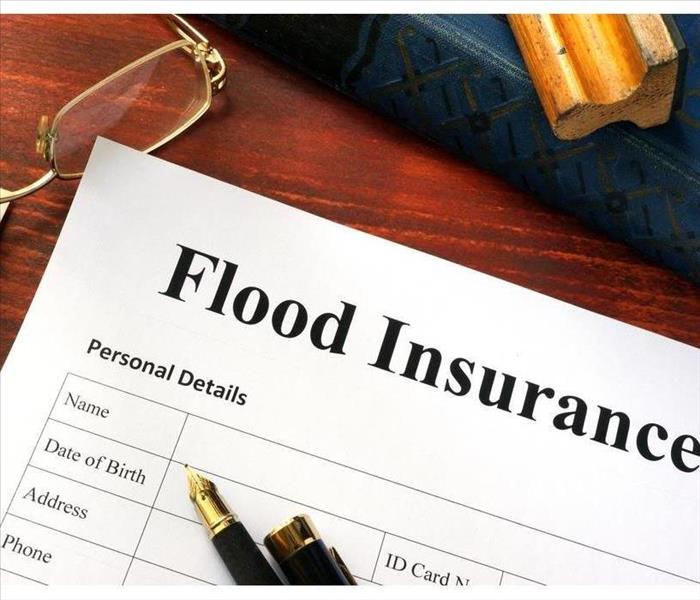 Buy flood insurance, if it's available for you.
Buy flood insurance, if it's available for you.
Tips to Protect Your Home and Property from Flooding
When it comes to flooding, there's a lot of ground to cover. We can't tell you when or where a flood will happen but we can share tips that will help you protect your home and property.
Measure your level of risk
Your risk of flooding depends on a number of factors. Your location, whether you live in an urban or rural area, the type of soil in your neighborhood, and even your home's elevation are all important considerations. The Federal Emergency Management Agency (FEMA) has created a map called the Flood Insurance Rate Map (FIRM) which shows where flooding is most likely to occur.
- Blue: This category has a 1% chance during any given year that flooding will occur – meaning less than one out of 100 people would see flooding over their lifetime if they bought insurance and lived there for 50 years!
- Orange: This category has at least a 1% chance during any given year that flooding will occur – meaning more than one out of 100 people would see flooding over their lifetime if they bought insurance and lived there for 50 years!
- Yellow: This category has at least a 0.2% chance during any given year that flooding will occur – meaning more than two out of 100 people would see flooding over their lifetime if they bought insurance and lived there for 50 years!
- Blue w/ Red Stripes: These areas may have features such as levees or dikes which protect them from certain types of floods but could still be affected by other types like coastal storm surge or riverine floods."
Buy flood insurance, if it's available to you.
If you live in an area prone to flooding, your homeowners' insurance company may offer flood insurance. If so, it will be included as a rider on your homeowners' policy. The National Flood Insurance Program (NFIP) offers coverage in high-risk areas outside of what's available from private insurers, but not all communities are eligible for this program.
Prepare your home
To ensure your home is prepared for flooding, you'll need to make sure that you have the following things:
- A water shutoff valve (usually located in the basement)
- Generator in case of power failure
- An elevated foundation
A backflow preventer is an important device that helps to protect your home from flooding and other safety concerns. The purpose of a backflow preventer is to make sure that only clean water flows into your home, as well as to prevent contaminants from entering the main water supply.
Keeping your gutters and downspouts clean and clear of debris is one of the most important things you can do to protect your home from flooding.
Stay safe
Floodwaters can be contaminated with sewage, chemicals, and other debris. Use extreme caution when driving or walking through floodwaters. Even shallow flooding is dangerous and should not be attempted unless absolutely necessary. Never attempt to drive across a flooded roadway; instead, turn around and find an alternate route to your destination if possible.
Being prepared can keep you from incurring damage
Create a plan for what will happen if you have to evacuate quickly. Remember: just because an area has been declared safe, doesn't mean there aren't still dangers lurking! You'll want to put together an emergency bag with essentials like medications, first aid supplies, and clothing; make sure everyone who lives in the house can get out safely, and plan ahead for how to communicate.
If you’re prepared, you can stay safe and protect your home from flooding. The most important step is to know how high your risk is for flooding and how prepared you are to deal with it if it happens. You also want to make sure that your home has been built with flood protection in mind. If possible, buy flood insurance before flooding occurs; remember that even if you don’t live in an area prone to floods, natural disasters like tornadoes and hurricanes can cause damage as well!
3 Steps To Preparing Your Business for Flooding
8/27/2022 (Permalink)
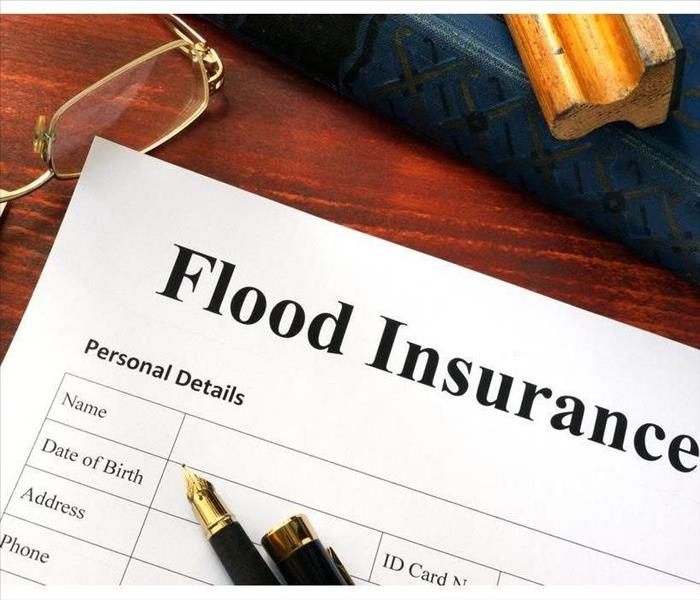 Generally, flood insurance will cover the cost of harm to your property.
Generally, flood insurance will cover the cost of harm to your property.
Steps To Recover After A Flooding
Heavy rainfall, extreme snow and ice melt, nearby bodies of water overflowing, or sewer issues can all result in big issues for your business in Bellrose, NY. No matter the cause, flooding can be catastrophic without proper preparation. Here are three steps to get your business ready when the water starts to rise.
Plan Ahead
Flooding can occur quickly, giving you little time to react. It's best to be prepared in advance so that you can act at a moment's notice. Make a plan of action and share it with your employees. Discuss exit plans for them and how to assist customers that may be in the business when disaster strikes. Create an emergency kit with necessary supplies:
- Battery-powered or crank radio
- First aid kit
- Flashlight
- Extra batteries
- Whistle
- Non-perishable food and water
- Manual can opener
- Small tool kit
- Cell phone chargers
- List of emergency numbers
Buy Insurance
In some areas, flood damage is more likely. If you live in a flood zone you should invest in insurance that covers this damage specifically. Generally, flood insurance will cover the cost of harm to your property caused by excess water entering the area, which your standard insurance may not allow for. This can help you to mitigate the costs of professional storm damage restoration after a flood, especially if you are dealing with dangerous black water.
Move Valuables
When storms are in the forecast, you should start to think about what kind of impacts they may have on your business. Move any valuables to the highest possible area in the building. Important documents, photos, cash and any other important items that will be destroyed by water need to be placed in a secure location.
Storms can be scary and dangerous and can severely impact your bottom line. Feel better about your ability to recover after flooding occurs by following these steps.
How and Why to Avoid Driving on Flooded Roads
8/27/2022 (Permalink)
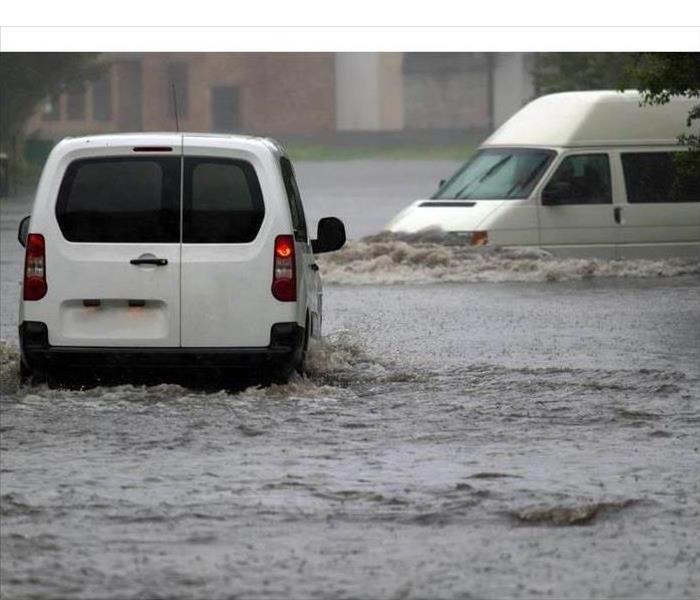 Driving through floodwaters could damage your vehicle or cause injury
Driving through floodwaters could damage your vehicle or cause injury
Driving through floodwaters could damage your vehicle or cause injury, so brake and reevaluate when you encounter a flooded street.
Risks of Driving Through Flood Waters
Failure to heed the above warning could cause the following:
- You may stall out, temporarily leaving you stranded. Repeated attempts at restarting could trigger engine failure.
- Your automobile may suffer from a loss of power steering, warped brake rotors or an electrical shortage, all of which means costly repairs.
- If water levels rise higher than your tire’s mid-point, your car could become washed away.
- In the event you lose control, your car could flip over or crash, potentially causing injury to you or another.
If you absolutely must drive along a flooded street, reduce your risk by going as slowly as possible. Begin no faster than two miles per hour and then slightly accelerate to prevent your engine from flooding.
Avoiding Flood Waters
Never go anywhere without your phone, always making sure it’s properly charged. Doing so will help you steer clear of waterlogged streets if weather suddenly shifts. Use Google Maps to automatically check for natural disaster zones by utilizing its “crisis notification card” feature. Certain smartphone apps devoted to providing helpful travel tips can also aid travelers in avoiding flooded roads. Alternatively, driver assistance services such as OnStar allow you to simply press a button and inform the operator where you live. Then, let the path to your destination in New Hyde Park, NY, conveniently beamed to your GPS be your guide.
If ever you feel anxious to check that your house has not flooded, resist the urge to drive through rising waters. Remain calm and remember that damage to your home can be repaired through hiring a water restoration specialist.
Encountering a flooded street is a perilous situation, so never risk harming your car, yourself or anyone else by attempting to cross. Let common sense guide you in seeking alternative routes.
How To Prevent Mold in Your Home After Flooding: 3 Steps
6/14/2022 (Permalink)
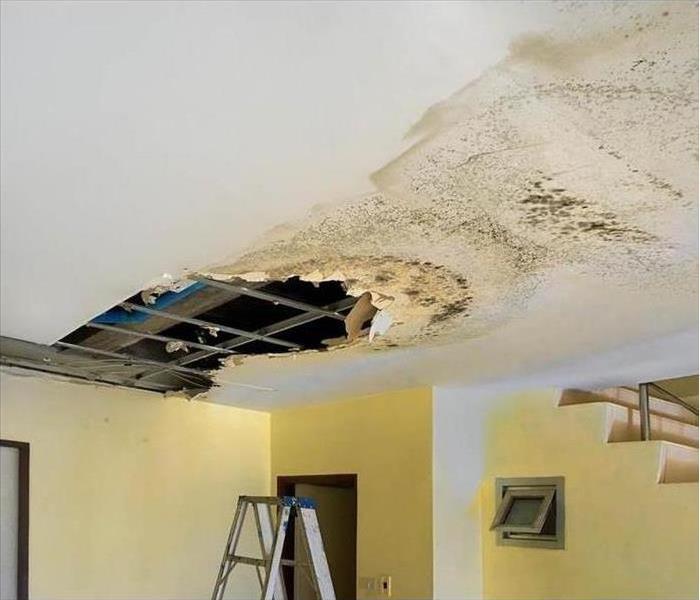 Water damage led to mold growth in a home in New Hyde Park, NY.
Water damage led to mold growth in a home in New Hyde Park, NY.
How To Prevent Mold Growth After a Flood
When floods occur due to powerful storms in New Hyde Park, NY, they can wreak havoc on your home, especially when it comes to mold growth. This is a common problem in the wake of strong floods because of the moisture and high humidity that floodwaters cause. However, you can prevent mold from taking hold inside your home by following a few preventive tips after the water event occurs.
1. Remove Humidity From Affected Areas
When flooding occurs indoors, the high humidity can cause mold to form on walls and other surfaces rapidly. Most species form within 24-48 hours of the flood because mold only requires humidity and moisture to take hold. You can reduce humidity in any affected rooms by opening windows and running fans. Use electric fans with caution and keep them well away from wet objects.
2. Remove Wet Items If Possible
Some porous items tend to absorb water and encourage rapid mold growth, so removing them from the flooded area can help reduce the risk. Paper, fabrics and certain types of wood are all more likely to experience mold issues, so removing them as soon as possible can help. Avoid entering deep floodwaters and call in a flood remediation and restoration company for assistance instead.
3. Avoid DYI Mold Removal Techniques
You may believe you can remove mold from flood-ravaged areas of your home with household cleaners, such as bleach, but this may not be effective. Many of these cleaners contain a large percentage of water, which may only encourage mold growth once used. Allowing experienced mold technicians and their cleanup tools can ensure that any mold caused by a flood will not return.
When floods affect your New Hyde Park, NY, home, the humidity, and moisture may encourage mold that can be difficult to eliminate. Knowing how to prevent growth after a flood can save you time and allow you to salvage your family's belongings.
Weather Damage Types
3/23/2022 (Permalink)
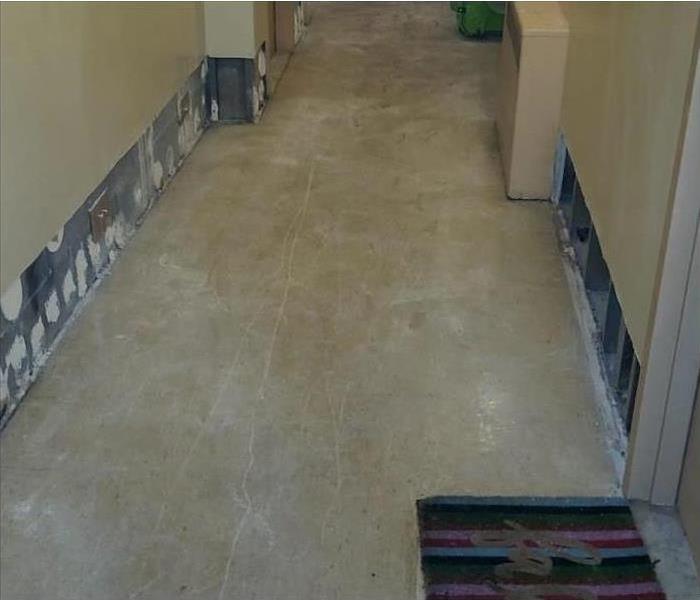 Commercial water restoration services in East Williston, NY
Commercial water restoration services in East Williston, NY
Types of Weather Damage
Many business owners and administrators in East Williston, NY, cannot accurately determine different types of flood damage. Not every type of problem that results from a storm is considered flood-related. Read on to learn more about the various categorizations.
1. Definitions
For insurance purposes, damage is only the result of a flood if it came directly from a source of accumulated water larger than around two acres. The disruption must be directly related to contact with such a body of water. For example, if a nearby pond overflows its banks and the runoff seeps into your basement or crawlspace, this would be covered under a flood insurance policy. However, storm damage resulting from high winds, such as blown shingles, should be claimed under your default commercial property insurance.
2. Protections
The most effective way to prevent flood damage to your workplace is to secure the building envelope. This is the overlapping system of barriers that keeps the environmental conditions on the inside different from the conditions outside. Many building components have a role to play in the barrier. For example, the slope of the roof and the gutter downspouts work to direct water away from the base of the building. Housewrap and caulking form another important layer by providing a vapor barrier, ensuring that your HVAC systems work efficiently.
3. Other Tips
If your worksite is in an especially high-risk area, you may need multiple sump pumps on your lowest floor. These are devices that activate if the low-lying basin in which they are installed begins flooding. They pump the excess away from the building and into a storm drain or the surrounding yard. Maintain these pumps by inspecting them yearly. Cover any major outdoor openings with appropriate shields or absorbent barriers.
Keeping your building up to code can prevent flood damage and other headaches. Just remember to locate a qualified flood cleanup professional in case your prevention methods prove insufficient.
What To Do If Heavy Rains Cause Sewage Backup
2/19/2022 (Permalink)
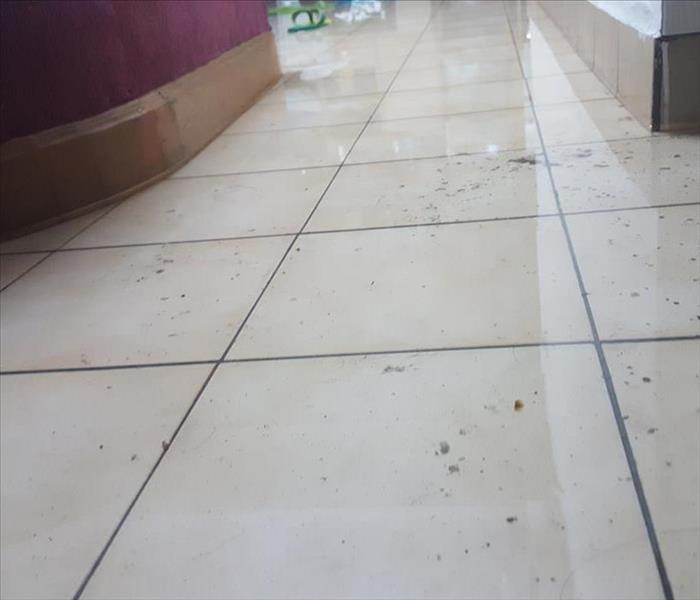 Rainwater can cause sewer backup in your home.
Rainwater can cause sewer backup in your home.
What To Do If Sewage Backs Up Due To Heavy Rains
Lots of rainwater can wreak all kinds of havoc in your home. Not only can the water itself cause damage, but it can also lead to mold. Worse yet, sewer backup can cause black water to come into your home. This water is dangerous.
If sewage backup comes into your home, take these steps:
- Get your loved ones and pets to dry ground
- Avoid going into the water at all costs
- Call a professional cleanup crew to extract the water
You may also want to take pictures of the damage to show your insurance company and keep a record. Remember that some restoration companies in Bellrose, NY, are open 24/7, so you can call anytime you need help.
What To Do After the Water Is Gone
Even after the cleanup crew has extracted the water, the affected area should be treated as dangerous. Anywhere that sewer backup touched can be contaminated. You should work with your trusted professional restoration crew to understand what to do next.
You may need to dispose of certain items. If your belongings are porous, they could have raw sewage in them that never comes out. Be sure to check with authorities in Bellrose, NY, to see how to best dispose of these belongings. Nonporous things may be saved with a bleach solution.
How To Prevent It
It’s better to prevent this problem from happening than to deal with it after the fact. You may wish to have an expert install a backwater valve that can keep sewage from coming into your home after a big storm.
Sewer backup and black water can be destructive forces in your home. You can take steps to help prevent this, but there is never a guarantee. If rainwater causes this issue for you, call a professional immediately to prevent infection, mold, and other problems.



 24/7 Emergency Service
24/7 Emergency Service






